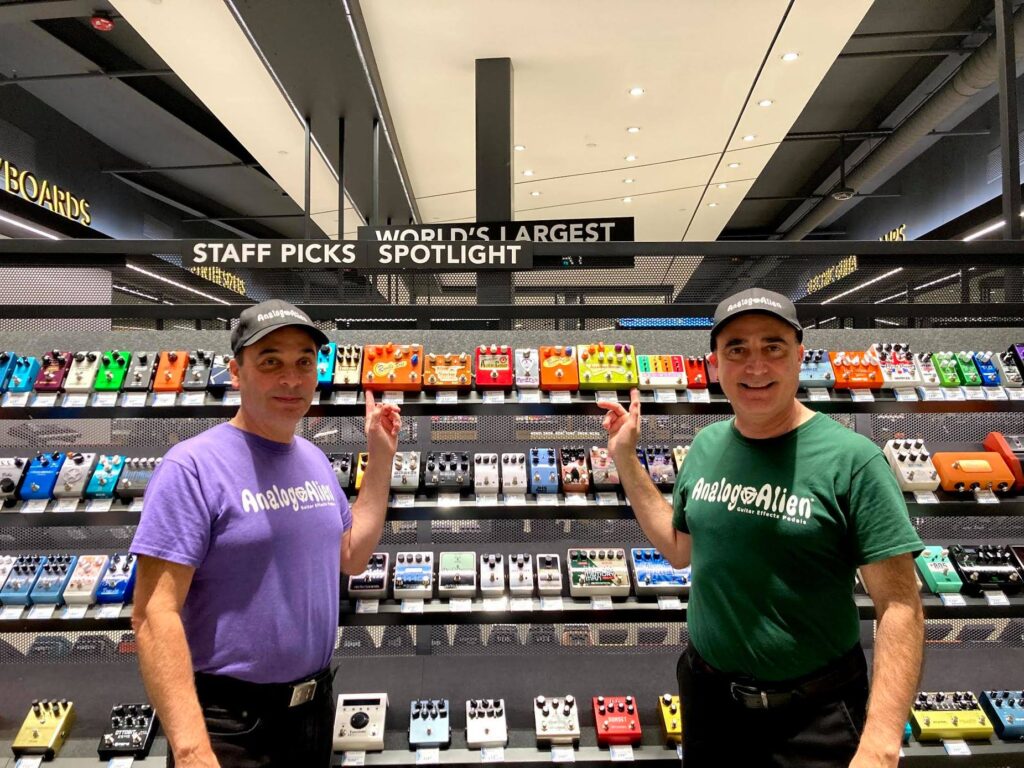Perhaps the best way to answer the question “what are guitar pedals” would be to look at playing music like making a meal.
When we first learn to cook we start with something basic, something that experts can use to make their fame fortunes like a jam tart or like Bob Dylan and his acoustic guitar.
Soon enough we want to move on to hot meals which is where we upgrade to electric guitars with an amp. This is great fun and again many professionals have had mega-successful careers using this theology however everyone likes a bit of salt on their Sunday roast and that’s exactly what guitar pedals are.
Guitar pedals are the spice and seasoning which turns a good tone into a great tone. When Hendrix plugged his Fender Strat into a Marshall tube amp then turned it all the way up he made all other guitarists look his way but by adding a wah pedal he made the world listen!
A wah pedal has a vocal sounding quality to it which makes a straight guitar tone sound like it’s talking or even singing and therefore it found use not just by individual musicians but by entire genres. It’s hard to even imagine a funk song without a wah pedal or similar effect such as an envelope filter involved.
Guitar pedals have indeed colored the tones of entire eras of music most notably the chorus pedal during the 1980’s used on clean guitar. The chorus effect is a very friendly sound that could be described as a sparkle. The Boss CE-2 was one of the first compact chorus pedals and can be heard on albums throughout the entire 80’s.
Of course, effects on guitar tones have been around since around the 40’s but when companies started to make them available outside of a studio setting and eventually small enough to carry in your guitar bag, the humble guitar pedal started to evolve into what it is today (and everything that comes with it, tuners, power supplies, boards and all.)
We can break down guitar effects pedals into four main categories, drive pedals, time-based effects, modulation effects, and utility pedals though there is much crossover between some of these.
Drive pedals come in three distinct subgenres, overdrive pedals are the lightest type of drive which can sound like a light crunch on your guitar tone. Distortion pedals are the heaviest type of gain, often found in hard rock and heavy metal styles. Fuzz pedals are the oldest type of drive historically and sound almost broken, they feel somewhat random in the way they react and these unpredictable qualities make it the most organic-sounding drive of the three.
There are many ways in which overdrives are used in metal, or distortion could even be used for slow blues, however for a basic understanding of drives, the above is a good first step.
Time-based effects usually boil down to delay pedals and reverb pedals, delay creates repeats of the notes you play which to a beginner player can sound like a scary and confusing idea however delay is used by most guitarists and is such a joy to experience. If you were to only start with one pedal it should be a simple analog delay. Reverb is the sound of an open space, think of it like singing in the shower because it sounds better or shouting into a tunnel. Reverb can sound deep and atmospheric or just adding a tiny bit can give your guitar tone depth you don’t realize is there until you turn it off and suddenly everything sounds worse.
Modulation effects are like the chorus pedals such as the Corona Chorus (yes really) from TC Electronic. These can add sparkle, movement, and swishy airplane-type sounds to your tone. There are far too many to list them all in a single paragraph but going back to the food analogy we could consider modulation effects as texture.
We also have utility pedals which can be anything that helps us as players without making a tangible change to the tone. These are the least sexy yet possibly the most important components to a pro setup, Four great examples are compressors, which tame maximum and minimum volume providing the player with a more even overall sound. EQ pedals allow the player to cut/boost very specific frequencies in a similar way to how a person tunes their hifi system to their living room. Thirdly a noise gate can prevent unwanted excess noise caused by bad wiring, high gain setup, or one of the numerous other reasons.
Lastly, but definitely not least are looper pedals which in themselves have helped define artists such as guitar players KT Tunstall and Ed Sheeran’s sounds. These pedals record short clips of you playing and then repeat them back to you over and over again in a loop. You can then add more layers on top to create a song and even play over what you’ve recorded without recording what you currently play, it’s like jamming with yourself and every guitarist should have one! There are many other utility pedals out there and these are some of the most interesting pedals.
This dive into what is a guitar pedal only scratches the surface of an extremely deep rabbit hole but it’s safe to say it’s one of the most fun and rewarding journeys one can take, we hope you enjoy it as much as we do.
We also have a post about how to use guitar pedals – that we highly recommend checking out!

